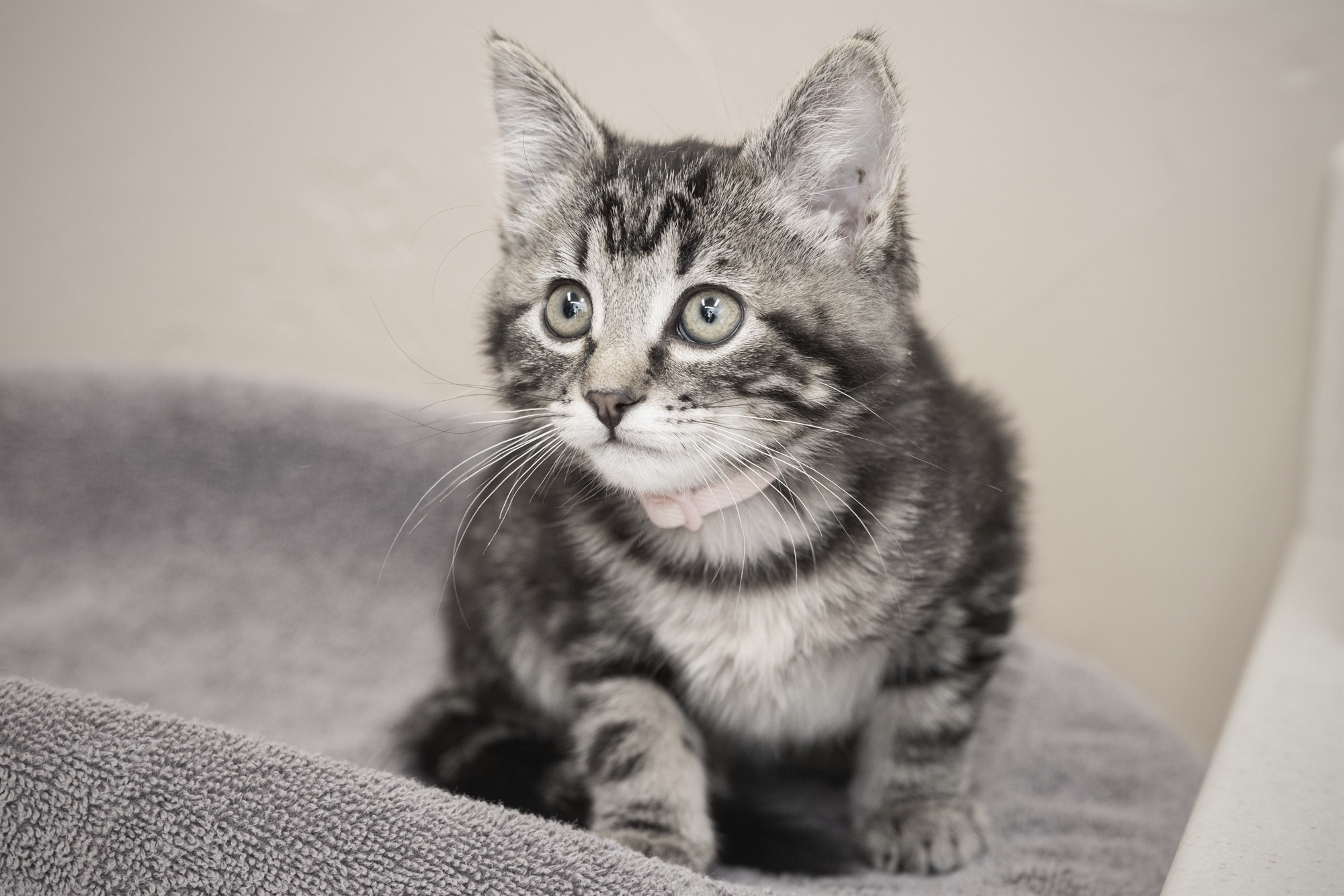Zoe is a 3 1/3-year-old, spayed female, shorthaired barn cat that was presented for her annual vaccines and wellness exam. Upon examining her mouth, we noticed unusually severe periodontal disease considering her young age. Zoe ended up coming back for a COHAT (comprehensive oral health assessment and treatment) and the following pictures and radiographs were obtained.
Note the excessive amount of tartar and gingivitis. Considering this cat’s age this is atypical and made us suspicious of feline juvenile periodontitis.
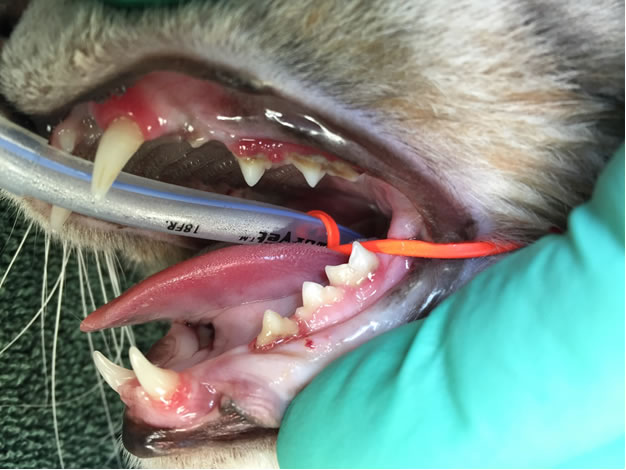
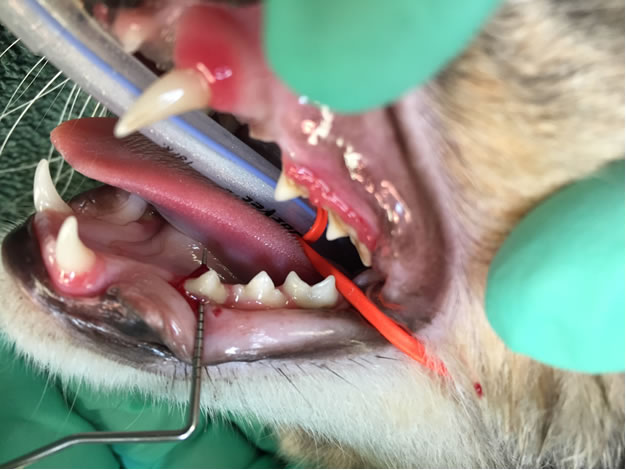
This photo demonstrates the excessive bleeding upon gentle probing and the complete loss of periodontal attachment and bone between the roots allowing us to pass the explorer under the crown and between the roots. 90% of Zoe’s teeth were in the end-stage of periodontal disease at the time of her dental procedure.
To demonstrate the rapid rate at which periodontal disease can progress, Zoe had a COHAT about 2 years ago and radiographs were obtained at that time. The following are radiographs from 2 years ago, followed by radiographs from now for comparison.
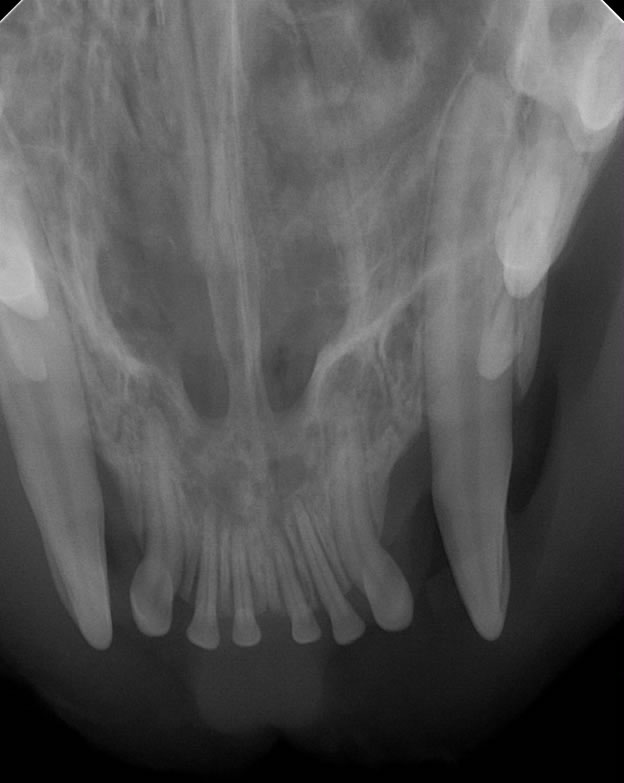
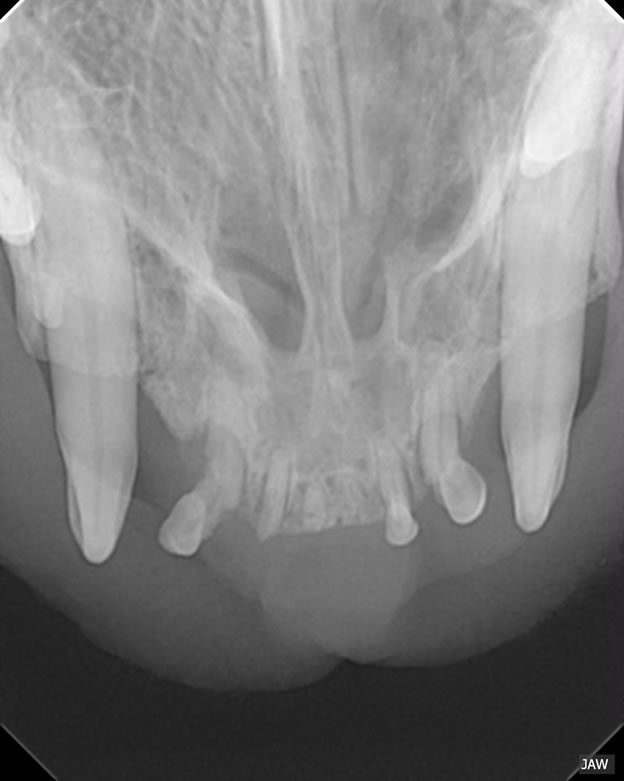
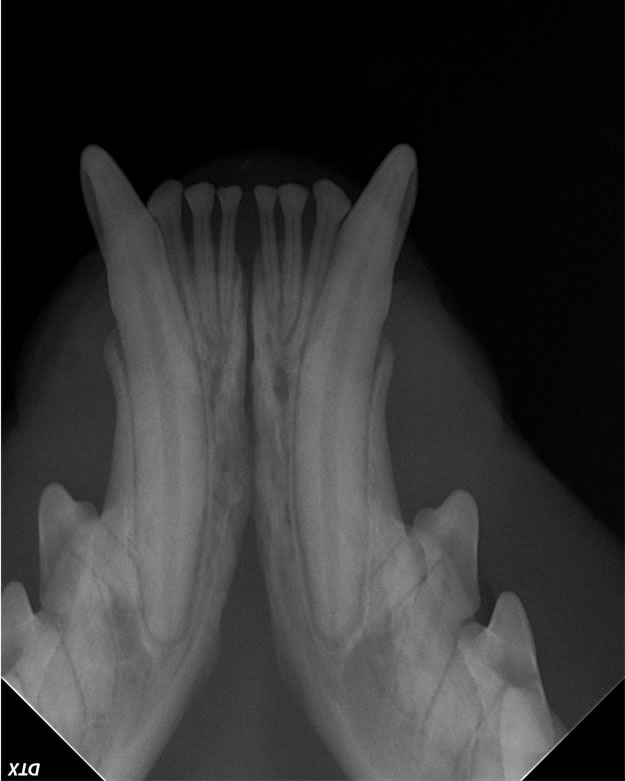
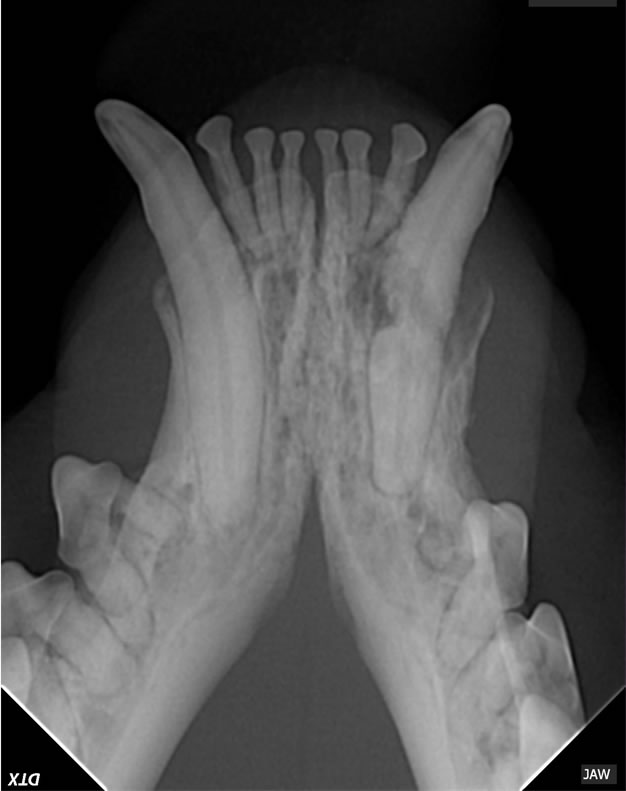
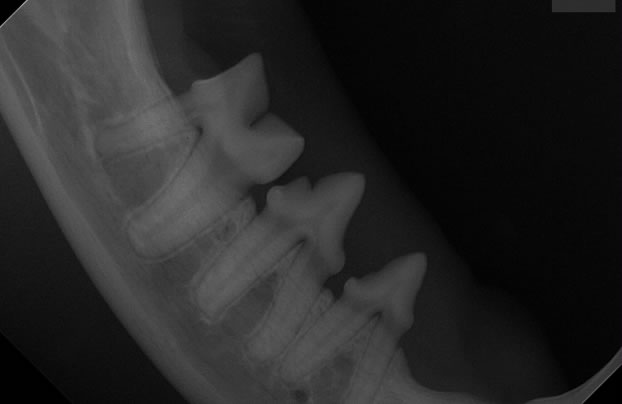
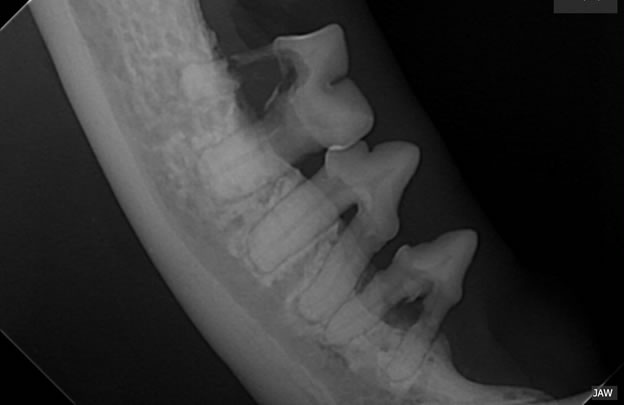
Unfortunately, nearly all of Zoe’s teeth exhibited advanced stages of resorptive disease or periodontal disease, or both. At this stage of disease the only logical treatment is to remove the affected teeth to eliminate pain and infection that cannot otherwise be realistically managed. This would leave Zoe with only a small number of teeth that do not oppose other teeth so are ineffective, and have a high chance of developing these same dental diseases. Considering these facts, we removed all of Zoe’s teeth so she will never need to suffer from dental pain or infection again.
Full-mouth nerve blocks were performed prior to surgery with the addition of a narcotic agent that may provide pain relief for up to 4 days. Very gentle surgical technique was emphasized and very small absorbable sutures were placed to close all dental extraction sites. Post-op radiographs were also taken to ensure complete removal of all dental hard tissues. Zoe was given a long acting antibiotic injection and was sent home with pain medication and a soft diet for 2 weeks. The o reported back the next day that Zoe was eating well and seemed very happy.
This is a great example of how a “routine wellness exam” can drastically change an animal’s quality of life!
